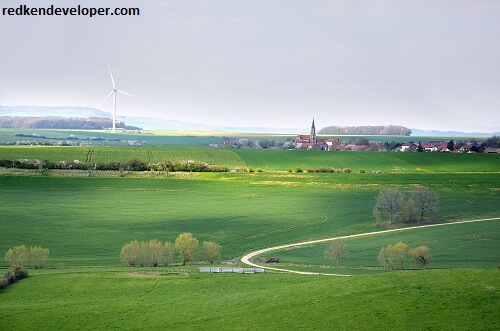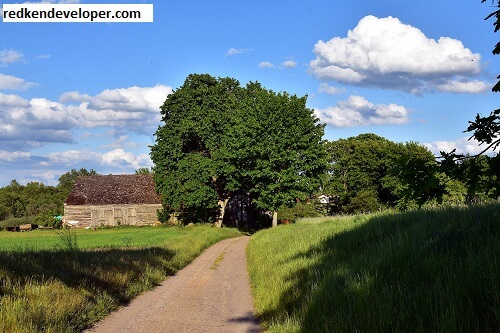Understanding the Development Build of React: Key Concepts, Best Practices, and Common Pitfalls
The Development Build:
The Development Build is the JavaScript library for building the UI. That went on to become one of the most popular front-end web development frameworks because of its declarative nature. The way it follows an architecture containing components. The most basic thing a developer needs to know about React is how to use two of the different. Builds through which a React application is the development and production build. In this article, we will explore what the development build of React is. Why it is so important, and how developers can best take advantage of it in the development process. We’ll also cover best practices, and common pitfalls, and will Answer frequently asked questions.
What is the Development Build of React?
The Development Build:
The two major builds in which react applications primarily develop and deploy are development and production builds. In simple words, the development build is a version of the React library that has been optimized for development purposes; hence, its outputs consist of more debugging information and better error messages. And include extra runtime checks to let developers build and debug applications more efficiently.
Main Features of Development Build:
- Unminified Code: In the production build, the React code is minified and optimized for performance. On the other hand, the development build contains full, unminified React code. This allows developers to view the source code directly in case debugging is required.
- Detailed Error Messages: One of the incredibly precious features that a development build gives is detailed error messages. It provides warnings and errors within the console as detailed as possible to help. The developers find where and how issues may be occurring. This may range from warnings on deprecated features, incorrect usage of hooks, or even the failure to render the component.
- Extra Checks: There are additional runtime checks in the dev version of React that will help highlight issues in your application. Runtime checks can now also detect some of those common mistakes such as types of invalid props or misuse of lifecycle methods.
- Development-Only Features: This development build includes more features that are only geared toward development. For instance, in the development build, the integration of React DevTools may be very verbose and may include features like component inspection and performance profiling.
- Poor Performance: Since the development build of React is accompanied by more debugging checks and un-minified code, the development build will be slower than its production counterpart. This is all right in development, but the production build was optimized for speed so is necessary for deployment in real-world use.
Why Use the Development Build?
The Development Build:
The development build of React tries to help developers make the application easier, faster, and less error-prone while developing. It supports developers’ better debugging since the development build includes helpful warnings, a stack trace, and more verbose error messages that make it easier to debug issues occurring while building the application.
- Better Testing: With more detail in logs and runtime checks, one catches errors better earlier in the development cycle, saving time on testing and debugging.
- Real-time Feedback: Real-time feedback is what many of the build tools for modern development, such as Webpack or Create React App (CRA), can do best. Fast refresh and hot module reloading enable developers to make changes to the code instantly reflected in the browser.
How to Set Up and Use the Development Build:
The Development Build:
The setup for the development build of React is very straightforward, especially if you’re using something like Create React App, which represents a toolchain all pre-configured for optimal development and production builds.
- Using Create React App: When using Create React App, a popular boilerplate tool for React applications, you get the dev build used automatically when running npm start or yarn start. This command starts a development server that compiles your app in development mode and automatically opens your default browser to the app. So if you’re running in development mode, CRA makes sure you are using the development build of React:.
- Manual Setup: If you are not using CRA, and instead have set up React from scratch with Webpack or another bundler, you should make sure that you have configured your Webpack setup to use the development build when React is running in development mode. Often, CRA will include a script in its `package.json` file that makes this configuration happen automatically for you, but you can do it manually by setting the NODE_ENV environment variable to “development”.
js
Copy code
process.env.NODE_ENV = ‘development’; // Set NODE_ENV to development - React DevTools: You can install and make use of React DevTools for inspecting and debugging your React components while in the development process. All React DevTools work seamlessly with the development build to deliver insights into the component tree, state, props, hooks, and performance. That tool is an essential, indispensable item for any React developer.
Performance Considerations:
The Development Build:
While the development build of React has fantastic debugging tools, it does come with some performance trade-offs. The optimizations for performance in production, such as minification, tree-shaking, and bundling, are not included in the development build of React. Just remember, though, that the development build is only meant to be used while developing. When you’re ready to send your application to production, you should always switch to the production build of React.
Moving to the Production Build:
The Development Build:
When you are finally ready to publish your app, React features a production build that minifies and optimizes performance as well as removes all the debugging code not required in the actual app. By default, this is done whenever you run the build command in most of the React applications:
#
In Create React App, you can type:
#
bash
Copy code
npm run build
This command generates a build folder containing a fully optimized production build of your React app.
Using Webpack, you would set your NODE_ENV to “production” and configure the build process of Webpack to create a production-ready build.
Common Pitfalls and How to Avoid Them:
The Development Build:
When developing with the dev build of React, there are common pitfalls that developers would hit. Some of them are given here along with how you can avoid them:
1. Performance Issues in Large Apps:
- Pitfall: With application sizes growing, development builds can rapidly become performance bottlenecks as a result of these extra checks and unminified code.
- Solution: Deploy runtime checks in the development environment to disable or reduce further using environment variables or other configuration options. For example, you might be able to turn off the React validation of props types in production once you are no longer using them for development purposes.
2. React Warnings and Errors Overload:
- Hazard: During development builds, React sometimes spans the walls of what a developer might consider an overload of warnings or errors, especially with big codebases or when leveraging deprecated APIs.
- Solution: Most importantly, the warnings must be addressed as they come. Warnings that aren’t fatal can be temporarily suppressed at the developer’s discretion, and instead of this, console. Warn () or console.error() can be used selectively, or non-fatal warnings can be ignored during development if possible, by changing environment settings.
3. Accidental Deployment of a Development Build:
- Pitfall: It’s easy to accidentally ship the dev build to prod and end up with poor performance and security risks.
- Solution: Always verify, before shipping, that you’re building your app in production mode. Use CI pipelines enforcing best practices, for example, by making sure tests run and only production builds are shipped
4. Compatibility with React DevTools:
- Pitfall: React DevTools sometimes does not work well with certain versions of React or configurations that cause frustration for developers.
- Solution: Install the latest version of React DevTools, and check for known issues associated with the version of React that is being used and its DevTools counterpart.
Best Practices for Using the Development Build:
The Development Build:
- Always use the development build for local development: All checks, better error messages, and the ability to debug add to the detection and rectification of errors at an early stage in the development cycle.
- Do not deploy the development build to production: Never deploy a development build to the production environment since this would result in slower speed as well as expose unnecessary debugging code to the end-user.
- Use React DevTools To Improve Debugging: Using React DevTools during development can save you a significant amount of time trying to understand and debug your components. React DevTools provides real-time inspection of props, states, hooks, and component trees.
- Optimize the app for production: Once the app is ready, build it with optimizations such as minification, tree shaking, splitting code into chunks, etc. This will make the loading speed faster and decrease the size of the bundle.
Frequently Asked Questions:
The Development Build:
1. What is the essential difference between a development and a production build of React?
This build includes the unminified code, additional error checking, and verbose error messages to help you debug in case anything goes wrong. The production build is optimized for performance with minified code, no extra error checking, and more compact file sizes.
2. How can I switch between development and production builds in React?
React automatically switches between the development and production builds based on the NODE_ENV environment variable. Use npm start or yarn start for development and npm run build for production.
3. Can I use React DevTools with the development build?
Yes, React DevTools works seamlessly with the development build to provide real-time inspection of component trees, hooks, props, state, and performance profiling.
4. What if the development build inadvertently gets deployed to production?
If you deploy


